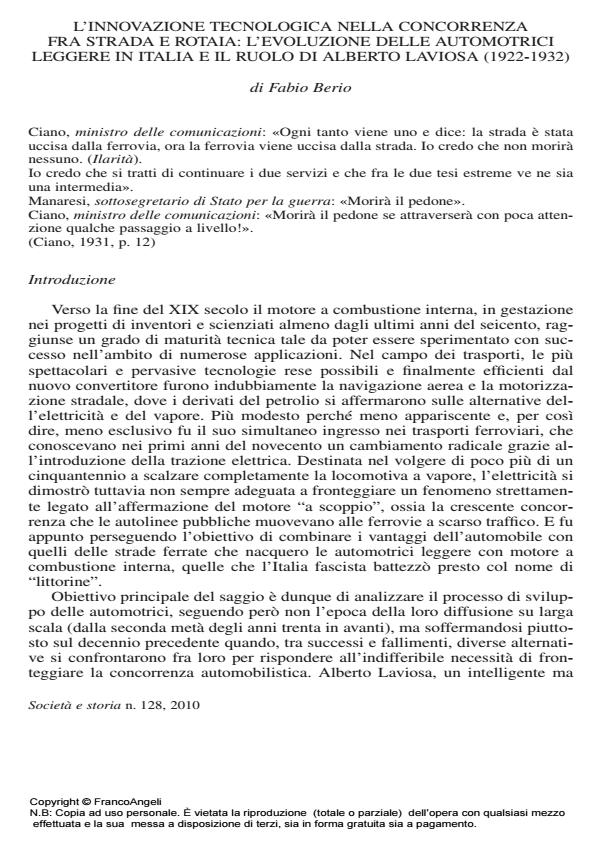Technological innovation within the competition between road and railway: the evolution of light railcars in Italy and the role of Alberto Laviosa (1922-1932)
Journal title SOCIETÀ E STORIA
Author/s Fabio Berio
Publishing Year 2010 Issue 2010/128
Language Italian Pages 38 P. 273-310 File size 756 KB
DOI 10.3280/SS2010-128003
DOI is like a bar code for intellectual property: to have more infomation
click here
Below, you can see the article first page
If you want to buy this article in PDF format, you can do it, following the instructions to buy download credits

FrancoAngeli is member of Publishers International Linking Association, Inc (PILA), a not-for-profit association which run the CrossRef service enabling links to and from online scholarly content.
This essay deals with one of the main effects the competition between road and rail had on the capacity for innovation in the Italian railway sector, considering the technological development that led to the birth of light railcars with internal combustion engine (the so called "littorine") and the role played in this process by Alberto Laviosa, an Italian entrepreneur and inventor who worked on several projects aimed at hybridizing the road transport means with the railway ones. The spread of littorine was the result of the encounter of two energy paradigms, on the one hand the declining one based on steam and on the other the rising one based on oil. These paradigms, however, did not just imply different cultural technologies, they also reflected different cultural attitudes. The author therefore adopts a complex research strategy, connecting technological changes with a broader economical, political and social context.
Keywords: History of transportation, railcars, technological innovation, Laviosa, road, railway.
Fabio Berio, L'innovazione tecnologica nella concorrenza fra strada e rotaia: l'evoluzione delle automotrici leggere in Italia e il ruolo di Alberto Laviosa (1922-1932) in "SOCIETÀ E STORIA " 128/2010, pp 273-310, DOI: 10.3280/SS2010-128003